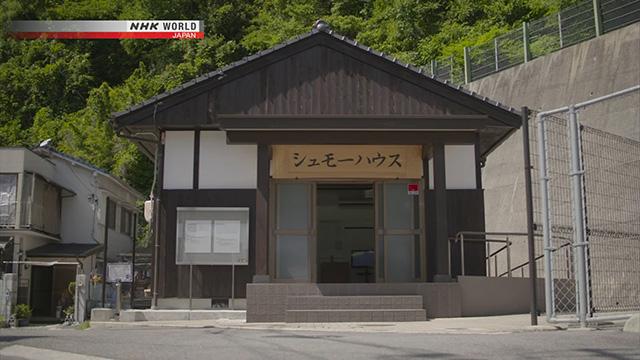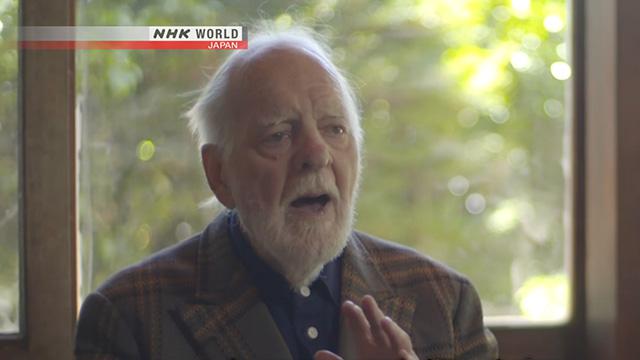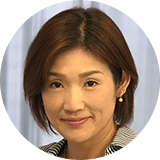Atonement

There is a small wooden house in a corner of Hiroshima. It's called the "Schmoe House", named after Floyd Schmoe. He collected money and built houses for atomic bomb victims in following the end of the war.
Schmoe was born in Kansas in 1895. Raised in a Quaker family with strong beliefs in peace and social justice, he was a conscientious objector during World War I and took part in rescue operations for injured soldiers and built houses for the refugees in the European theater. During World War II, he helped Jewish refugees and Japanese-Americans forcibly moved to internment camps.

He was devastated when he learned that the United States had dropped the atomic bombs on Hiroshima and Nagasaki. Most Americans supported the bombings but for Schmoe the indiscriminate killing of women and children was unforgivable. He felt he had to do something to atone for the destruction.
NHK obtained audio of an interview in which he talks about his motivation for starting the building project. He says people wouldn't believe him if all he did was say sorry. But if he went all the way to Japan and built a house for survivors with his own hands and money, they might understand.
Schmoe House
Schmoe arrived in Hiroshima in 1949 with three companions and $4000 in donations collected from around the US. The "Houses for Hiroshima" project started with young volunteers from both America and Japan. One of them, Tomiko Yamazaki, then a college student, told us she wanted to do it because she knew how miserable it was to be homeless. Her house was burned down during a wartime US air raid.


An American volunteer, Jean Walkinshaw, told NHK she never experienced any hostility while in Japan. In fact, she was impressed by the kindness of the local people who stopped by to help. She recalls having fun working, cooking, and talking to her fellow volunteers.

21 houses were completed in five years. The only one left standing is the "Schmoe House". It was crumbling and about to be demolished for a road construction project in the neighborhood. But local residents asked authorities to restore it, and in 2012 it was opened to the public as a museum showcasing the various kinds of overseas support for the atomic bomb victims.

Hiroko Nishimura was one of those who lobbied to keep the house. She learned of Schmoe after hearing about a statue of girl in Seattle being vandalized in 2003. The statue was modeled after Sadako Sasaki, a Hiroshima girl who developed leukemia from the atomic bombing and folded paper cranes in the hope of getting better. She died at age of 12. Nishimura wondered why there was a statue of Sadako in America, and learned it was because of Schmoe. At the age of 95, he had the statue installed in a peace park he created in Seattle. Nishimura says she wanted to learn more about a person who had gone all the way to Hiroshima to help atomic bomb victims.
Nagasaki House
Nishimura now leads a team called "The Group for Learning from Floyd Schmoe." Its members have been collecting materials and meeting people throughout Japan who know of Schmoe and his project. But one thing has long been a mystery to Nishimura's team: the "Houses for Nagasaki" project. Schmoe and the volunteers also built houses in the other city that suffered from the atomic bomb. Nishimura's team spent more than a decade searching for information on the Nagasaki project. But they couldn't get in touch with anyone who built the houses or lived in them.
But last year, a man contacted them saying he was one of the volunteers who built houses in Nagasaki. Masahiro Kitagawa was a college student in Tokyo who had survived the Hiroshima bomb when he was 15. After that, he felt he owed it to his many friends killed by the bomb to always help others. Kitagawa told NHK everything he knew about the project. He suddenly passed away in July at the age of 87 from pneumonia. I attended the wake and thought this is what we face when covering a story about a war that ended more than seven decades ago. Time is ticking.
Kitagawa connected Nishimura to a key member of the Nagasaki Project. James Wilson, 90 years old, lives in a Tokyo suburb. He came to occupied Japan when he was 20 to volunteer in the postwar recovery.

He and Schmoe met in Hiroshima and, despite their age difference, immediately hit it off. Schmoe asked Wilson to take charge of the Nagasaki building project.
Schmoe negotiated with city officials and set a condition that the houses only be offered to "widows with more than two children." After the houses were built, Wilson lived there for 3 years and looked after the children while the mothers went to work during the day.
He says he was like a brother or father to them and it was like a big family. He says he was still young and growing as a person, and living with them helped him put his life together.

"My Children"
The Nagasaki houses have all been torn down and all that's left is a concrete public apartment building, one of those ubiquitous throughout Japan. But this one has a peculiar name: "Schmoe Apartment". In March, Nishimura and her colleagues went there looking for former residents of the Schmoe houses.
The only clue they had was a Christmas picture, one of Wilson's most treasured possessions. Two names were written on the back: "Yoshida" and "Baba".

They were planning on going door-to-door but on their first try, they met Mitsuo Baba. He lost his father to the atomic bomb when he was still in his mother's womb. Baba told Nishimura that "Yoshida" lives in the building, too.
The team learned that 8 houses were built on the site. They were also able to trace back and find six of the children.
On the site, there was a community house where the children would gather, cooking meals and playing with Wilson. It has been rebuilt but they still use it as a gathering place. Two months later, Nishimura met some of the children there and listened to their stories.
They hadn't seen Wilson for about 60 years but they remembered him dearly. As they spoke, there was a single memory they all came back to. One time, a neighbor came barging in, saying his daughter had been hit by a kid from the Schmoe houses. Yoshida says they didn't do it and Wilson stood up for them, saying "My children would never do such a thing." His referring to them as "my children" left a strong impression on them.

Back then, poor kids without fathers were often discriminated against. Yoshida says people always pointed at them when something went wrong, and so Wilson's defense touched them. As he talked about this, his words were hampered by tears.
Commitment to Peace
Floyd Schmoe's commitment to peace didn't wane, even after the Hiroshima and Nagasaki projects. He went to the Korean Peninsula and helped those affected by the Korean War, and then to the Middle East to do work for refugees there. Finally, he built the park in Seattle at the age of 95, his final work for peace. He used to say peace is about taking action not words.
"Of course, folding paper cranes would never stop an atomic war but I tell the children that folding paper cranes will make friends and friends will not make war."
Schmoe died in 2001, at the age of 105, but his legacy lives on. More and more people are visiting the Schmoe House to learn about his work. Many send messages to Nishimura, saying they were inspired. They say Schmoe's work shows how a single person can only do so much, but by connecting with others, can achieve so much more.
Nishimura and her team have published books about Schmoe and are now working on a new edition that includes what happened in Nagasaki.

